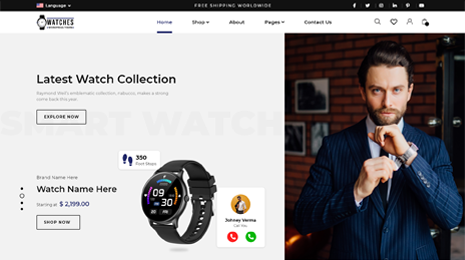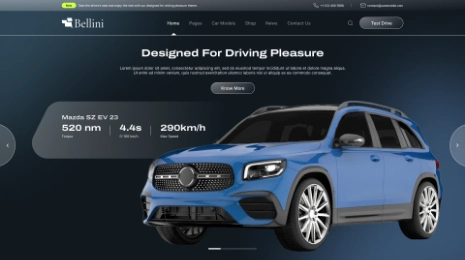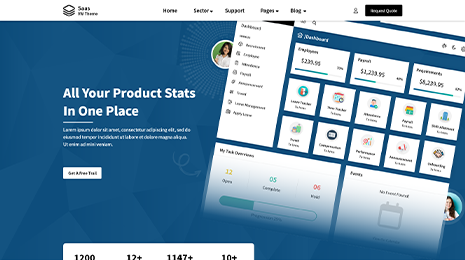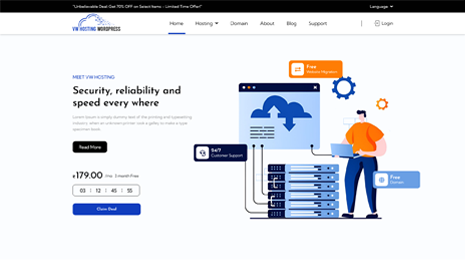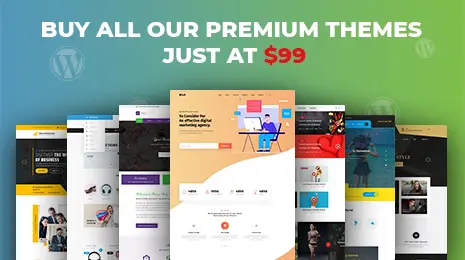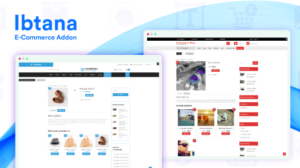Introduction
When you have multiple websites open, favicons can aid in keeping track of various web pages.
Favicons are small icons that appear on the tab for a page alongside the page’s title. Adding a favicon to your website helps to increase visibility in the eyes of your website users, and it also helps to strengthen your brand’s identity.
Here, we’ll share a detailed guide on favicon with its benefits.
What Is A Favicon On A Website?
A favicon in WordPress is a small icon measuring 16×16 pixels that represents your website. Favicon helps users identify your website on browsers. When multiple website tabs are open on the browser, the favicon is more helpful in identifying which one is your website.
The small size of favicons makes them ideal for displaying simple graphics or text. Although they may look similar to website logos, they serve different purposes. It’s important to note that the size and resolution The favicon may need to be smaller or incorporated into the company’s original logo.
Where Can You See the Favicon?
Favicons appear next to a website’s identity on bookmarks, tabs, apps, history, and search bars.
Why are favicons important?
Adding a favicon to your website will help boost the credibility of your business website. By doing so, your online brand will be promoted, and potential customers will be able to trust you.
Favicons serve as a visual cue that enables easy and quick identification for website users. They also unify all browser components into a cohesive and well-branded browsing experience.
10 Benefits Of Adding A Favicon To Your Website
Adding a favicon to your website can provide several benefits. For example, a favicon can help users recognize your website and make it stand out in their bookmarks. Here are ten benefits of adding a favicon to your website:
1. Enhance The Website Interface’s Usability
Many people may not, but favicons play a crucial role in the browsing experience. As most users prefer visuals, they tend to perceive images faster than words. Hence, a favicon serves as a visual trigger, allowing users to identify and locate the desired tab or link.
Instead of reading through tabs and links one by one, users can save valuable time and effort by simply looking at the images. While a few seconds may not seem significant, it can add up over time, especially when users browse the web frequently.
2. Support Brand Awareness And Recognition
Favicons work similarly to logos for physical products or places. That’s why companies often choose logos or their variations as favicons.
Favicons are memorable and catchy elements that help users find or notice a website among the competition. Users can easily remember a well-designed symbol that is legible in small sizes or resolutions. This factor supports the general promotion strategy and increases brand recognition across various sources.
3. Strengthen The Consistency Of Design Solutions
A website’s interface hinges on the crucial inclusion of a favicon, a small yet impactful element that plays a pivotal role in ensuring a positive user experience. Functionality and design are intricately intertwined, with user satisfaction being a primary objective. The favicon’s design typically adheres to the site’s established stylistic theme, fostering a sense of unity and consistency throughout the web platform. This visual consistency not only enhances the aesthetic appeal but also contributes significantly to the site’s overall cohesiveness. In essence, the favicon serves as a visual beacon, guiding users and reinforcing the brand’s identity, making it an indispensable component of effective web design.
4. Find A Necessary Page Much Quicker And Easier
Like health, people don’t realize the importance of favicons until they are in poor health. The user automatically recognizes a favicon that is legible and visually appealing, while the absence of an illegible favicon causes a weak point in user experience. In today’s fast-paced world, users expect favicons to be a must-have in website design as they save their most precious resource: time.
5. Professionalism
Adding a favicon imparts a polished and professional veneer to your website. It demonstrates a meticulous approach, showcasing your dedication to an impeccable user experience. This small yet significant detail conveys a level of sophistication, instilling trust and confidence in your brand. It signals that you prioritize even the minute aspects of design, reinforcing your commitment to excellence. This professional touch not only elevates the aesthetics but also establishes a strong foundation of credibility, leaving visitors with a positive impression of your site and business. In essence, a favicon is a powerful tool for projecting a high standard of professionalism in the digital realm.
6. SEO Benefits
A well-designed favicon serves as a visual anchor for your website, instantly recognizable amidst a sea of tabs. This visual cue helps users locate your site effortlessly, facilitating smoother navigation and reducing bounce rates. When users bookmark your site, the favicon adds a touch of professionalism, making it stand out in their list of saved pages. Moreover, for those reliant on screen readers, a favicon offers an extra layer of accessibility, providing context about the site. While search engines may not directly consider the presence of a favicon in their ranking algorithms, the improved user experience it brings can lead to higher engagement metrics. These metrics, such as lower bounce rates and longer session durations, are viewed favorably by search engines, ultimately benefiting your site’s overall SEO performance. Therefore, though seemingly small in stature, the favicon wields a notable influence on the broader SEO landscape through its enhancement of user interaction and site accessibility.
7. Browser Recognition
Favicons play a crucial role in browser recognition. They prominently feature in the address bar, bookmarks, and tabs, serving as a visual beacon for users amidst a sea of open tabs. This tiny icon provides a powerful cue, enabling users to swiftly pinpoint and identify your site, even when immersed in a multitude of web pages. This visual consistency aids in creating a seamless browsing experience, enhancing user engagement and trust. It’s a subtle yet significant detail that contributes to the overall professionalism and branding of your website, ultimately leaving a lasting impression on your audience.
8. Professional bookmarking
Professional bookmarking involves the strategic use of visually appealing icons, known as favicons, alongside website titles in browsers. This practice enhances user experience by providing a quick visual reference to saved web pages. When users bookmark a site, these icons create a polished, organized appearance in their bookmarks bar. This not only adds a professional touch but also aids users in efficiently locating and identifying their favorite sites amidst a sea of bookmarks. It fosters a sense of trust and credibility, showcasing a commitment to detail-oriented design. Overall, professional bookmarking elevates the overall aesthetic and functionality of a website, leaving a lasting impression on visitors.
9. Reduced Bounce Rate
A favicon plays a crucial role in reducing bounce rates on a website. When visitors see a distinctive icon associated with your brand, it creates a visual anchor, enhancing recognition and trust. This visual cue helps users quickly identify and remember your site, especially amidst multiple open tabs. As a result, they’re more likely to stay engaged and explore further, rather than quickly bouncing off. This improved initial interaction fosters a sense of professionalism and credibility, which can lead to longer and more meaningful user interactions. Ultimately, a well-designed favicon contributes significantly to a positive user experience and can ultimately lower your site’s bounce rate.
10. Enhanced Credibility
A well-crafted favicon significantly bolsters a website’s credibility. This small but impactful visual element communicates attention to detail and a commitment to user experience. It conveys a sense of professionalism, suggesting that the site is managed with care and precision. When users encounter a site with a distinctive favicon, it instills a sense of trust and reliability, ultimately enhancing the overall perception of the brand. This visual marker becomes an integral part of the site’s identity, reinforcing its legitimacy in the eyes of visitors. In turn, this can lead to greater user confidence and increased engagement with the content and services offered.
Conclusion
Adding a favicon to your website, especially when utilizing premium WordPress themes, can significantly bolster your branding efforts, elevate the user experience, and imbue your online presence with an additional layer of professionalism. This seemingly minor design element holds immense potential for making a lasting impact, as it contributes to forging a favorable initial impression while assisting visitors in swiftly recognizing and engaging with your site. In essence, integrating a favicon into your website becomes a straightforward yet highly effective means of enhancing the overall quality and functionality of your online platform.











